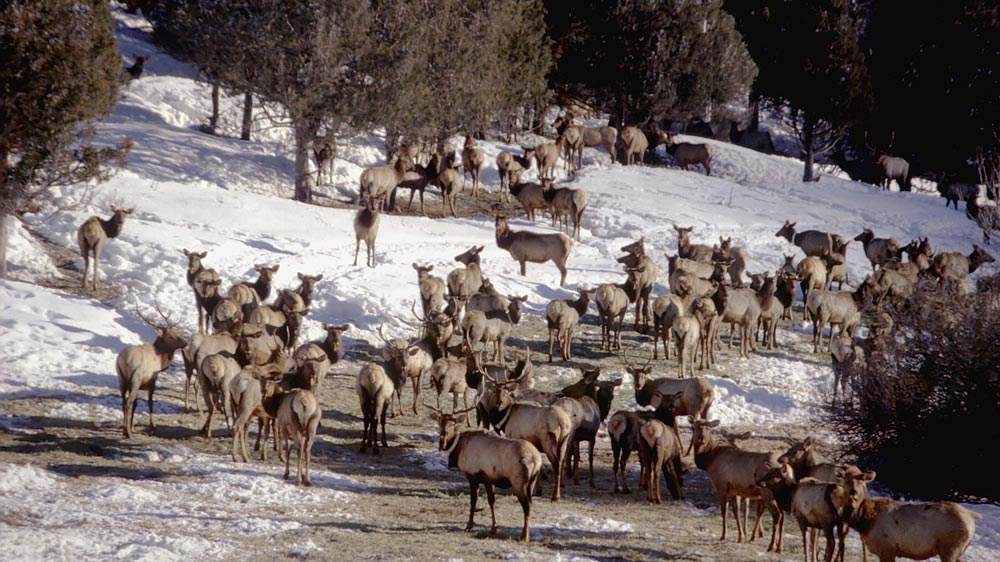
Winter Feeding Advisory Committees
Advisory Committees
Winter Feeding Advisory Committees assist the Department with assessing winter conditions and make recommendations about winter feeding based on local conditions. Winter Feeding Advisory Committees exist in regions where emergency feeding most typically have occurred in the past—Southwest, Magic Valley, Southeast, Upper Snake, and Salmon Regions all have committees. Each regional committee is made up of five local citizens who monitor winter conditions and make recommendations to the Fish and Game staff about feeding big game.
On their own time, these individuals track local conditions and wildlife distribution and landscape conditions, and they serve as sounding boards for citizens in their communities. They communicate with Fish and Game staff on a regular basis.
Winter Feeding Advisory Committees were established in the 1990s. Members of the committees are citizen volunteers who are approved to serve on the committee by the Idaho Fish and Game Commission. While they make recommendations, the final decision to feed big game in the winter is up to each Fish and Game Regional Supervisor.
Advisory Committee meetings are subject to open meeting law and those notices are posted here.
What factors determine a winter feeding emergency?
Fish and Game personnel and the Winter Feeding Advisory Committees in each region of the state have developed a set of criteria that when met, can trigger a winter feeding emergency.
Factors considered include snow dept, subzero daytime temperatures, crusted snow, animal condition, number of animals, winter range condition, and the expected number of days of winter conditions remaining. It often takes a combination of factors for an emergency situation to exist.
It may also be necessary to ‘bait’ animals way from highways or railroads for the safety of people and the animals. Feeding is also used to draw animals away from stored crops or livestock on private property when other deterrents such as fencing, hazing, and emergency depredation hunts do not work.
The bottom line in making the decision to feed is determining if a period of critical stress has been reached such that significant losses of adult reproductive females will occur, a significant risk to human safety exists, or if extensive property damage is likely to occur and other methods have proven ineffective.
Official Criteria
The Idaho Administrative Procedures Act covers legal criteria that are considered to declare a winter feeding emergency and forms the basis of the commission policy. It is available on the State of Idaho Administrative Rules website at this direct link.
Learn more about Fish and Game winter feeding
Big Game Winter Feeding Program

